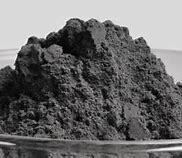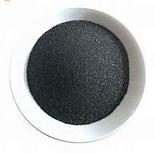1. Introduction
Just 24 hours ago, a major aerospace manufacturer announced a breakthrough in large-scale titanium 3D printing using recycled Ti6Al4V powder—highlighting growing industry interest in sustainable, high-performance metal powders. As demand surges for lightweight, corrosion-resistant components, understanding the nuances between titanium powder types has never been more critical.

Whether you’re sourcing titanium powder for additive manufacturing, coatings, or pyrotechnics, not all powders are created equal. This guide breaks down the key varieties, compares their characteristics, and explains what drives titanium powder price fluctuations worldwide.
2. Types of Titanium Powder and How They’re Made
Titanium powder comes in several forms, each suited to specific applications based on purity, particle shape, and production method.
- Pure titanium powder: Often used in chemical processing and biomedical implants due to its biocompatibility and corrosion resistance.
- Ti6Al4V powder (also called Ti64 powder): The most common titanium alloy powder, ideal for aerospace and medical 3D printing thanks to its high strength-to-density ratio.
- Spherical titanium powder: Produced via plasma or gas atomization, this flowable powder is essential for consistent layer deposition in laser-based 3D printing.
- HDH titanium powder (Hydride-Dehydride): Made by hydrogenating titanium sponge, then milling and dehydrogenating it. Cost-effective but irregular in shape—less suitable for high-end additive manufacturing.
- Gas atomized titanium powder: Offers superior sphericity and flowability, making it the gold standard for titanium powder additive manufacturing despite higher costs.
3. Titanium Powder for 3D Printing: What You Need to Know
Additive manufacturing demands powders with tight particle size distributions (typically 15–45 µm) and high sphericity to ensure smooth recoating and dense part formation.
Ti6Al4V powder dominates the titanium 3D printing market. Its mechanical properties closely mimic wrought titanium alloys, enabling end-use parts in jet engines, orthopedic implants, and racing components.
When evaluating titanium 3d printing powder, consider oxygen content—lower is better (<0.15% for aerospace grades). Also, check if the supplier offers certified traceability, especially for regulated industries.

4. Pricing Breakdown: What Affects Titanium Powder Cost?
Titanium powder price per kg varies widely—from $80/kg for basic HDH-grade pure titanium powder to over $400/kg for high-purity, spherical Ti6Al4V powder optimized for aerospace 3D printing.
Key cost drivers include:
- Production method (gas atomization > HDH)
- Alloy type (Ti64 > pure Ti)
- Particle morphology (spherical > angular)
- Certification requirements (AMS, ASTM, ISO)
Global supply chain constraints and energy-intensive refining also impact titanium metal powder price. Buyers should compare quotes from multiple titanium powder suppliers but prioritize quality over minor savings.
5. Beyond Metal: Specialty Titanium Powders and Compounds
Not all ‘titanium powders’ are metallic. Several ceramic and composite variants serve niche roles:

- TiO2 powder (titanium dioxide): Used in sunscreens, paints, and food—not for structural use.
- TiO2 nano powder: Enhances UV blocking and photocatalytic activity.
- Titanium nitride powder & titanium carbide powder: Extremely hard ceramics used in cutting tools and wear-resistant coatings.
- Titanium diboride powder (TiB2) and titanium boride powder: High-melting-point conductors used in aluminum smelting and armor.
- Titanium flash powder: A pyrotechnic mix (often with potassium perchlorate)—highly reactive and regulated.
Note: Titanium dust can be flammable or even pyrophoric in fine forms. Always handle with proper safety protocols.
6. How Titanium Powder Stacks Up Against Molybdenum and Tungsten Powders
While titanium powder excels in lightweight strength, other refractory metal powders fill different roles:
- Molybdenum powder (moly powder): Higher melting point (~2,623°C) than titanium; used in furnace parts, electronics, and as an alloying agent. Molybdenum disulfide powder (MoS2 powder) serves as a dry lubricant.
- Tungsten powder (wolfram powder): Denser (19.3 g/cm³) and harder; ideal for radiation shielding, weights, and tungsten carbide tools. Spherical tungsten powder is gaining traction in defense AM applications.
Unlike titanium, neither molybdenum nor tungsten forms stable, protective oxides at room temperature—but both command premium prices for high-purity grades.
7. Where to Buy and What to Watch For
When you buy titanium powder, verify:
- Intended use (e.g., titanium powder for 3D printing vs. pyrotechnics)
- Certifications (ASTM F1580 for Ti6Al4V, ISO 13322 for particle size)
- Supplier reputation—look for established names in international titanium powder markets
Beware of misleading listings: ‘titanium coated diamond powder’ or ‘burnt titanium powder coat’ aren’t standard industrial terms and may indicate low-quality or misrepresented products.
Also, note that TiH2 powder (titanium hydride) is sometimes used as a foaming agent—not a direct substitute for titanium metal powder.
8. Conclusion
Choosing the right titanium powder depends entirely on your application. For 3D printing, invest in spherical, gas-atomized Ti64 powder from a trusted titanium powder supplier. For cost-sensitive non-structural uses, HDH or pure titanium powder may suffice. Always factor in total lifecycle value—not just upfront titanium powder price per kg.
As additive manufacturing scales and recycling improves, expect more stable pricing and broader access to high-performance titanium alloy powder. Until then, knowledge is your best tool when you’re ready to buy titanium powder.
Our Website founded on October 17, 2012, is a high-tech enterprise committed to the research and development, production, processing, sales and technical services of ceramic relative materials such as Compare. Our products includes but not limited to Boron Carbide Ceramic Products, Boron Nitride Ceramic Products, Silicon Carbide Ceramic Products, Silicon Nitride Ceramic Products, Zirconium Dioxide Ceramic Products, etc. If you are interested, please feel free to contact us.
